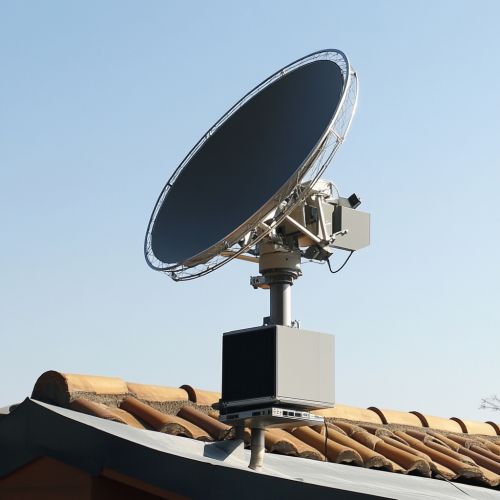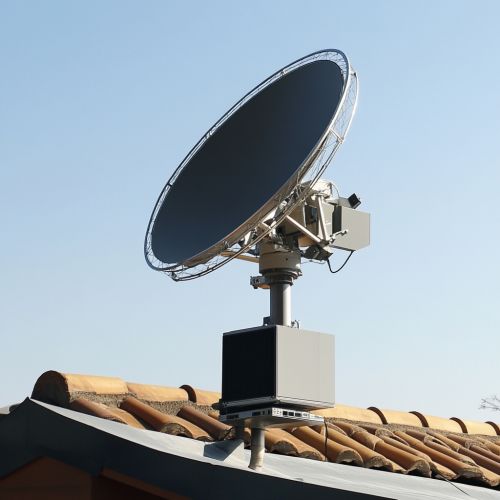Signal Reception: Difference between revisions
(Created page with "== Introduction == Signal reception is a fundamental aspect of communication systems, encompassing the processes and technologies involved in receiving, interpreting, and processing signals transmitted from various sources. This article delves into the intricacies of signal reception, exploring its principles, mechanisms, and applications across different domains. == Principles of Signal Reception == Signal reception involves the detection and interpretation of electrom...") |
No edit summary |
||
| Line 26: | Line 26: | ||
Antennas are essential components in signal reception, responsible for capturing electromagnetic waves. They come in various designs, such as dipole, parabolic, and patch antennas, each suited for specific applications. The choice of antenna affects the reception quality and range. | Antennas are essential components in signal reception, responsible for capturing electromagnetic waves. They come in various designs, such as dipole, parabolic, and patch antennas, each suited for specific applications. The choice of antenna affects the reception quality and range. | ||
[[Image:Detail-97783.jpg|thumb|center|A modern parabolic antenna mounted on a rooftop.|class=only_on_mobile]] | |||
[[Image:Detail-97784.jpg|thumb|center|A modern parabolic antenna mounted on a rooftop.|class=only_on_desktop]] | |||
=== Receivers === | === Receivers === | ||
Latest revision as of 13:03, 30 August 2024
Introduction
Signal reception is a fundamental aspect of communication systems, encompassing the processes and technologies involved in receiving, interpreting, and processing signals transmitted from various sources. This article delves into the intricacies of signal reception, exploring its principles, mechanisms, and applications across different domains.
Principles of Signal Reception
Signal reception involves the detection and interpretation of electromagnetic waves or other forms of transmitted signals. The process can be broken down into several key stages:
Signal Detection
Signal detection is the initial stage where the presence of a signal is identified. This is typically achieved using antennas or sensors that capture the incoming signal. The effectiveness of signal detection depends on factors such as signal strength, noise levels, and the sensitivity of the receiving equipment.
Signal Amplification
Once detected, the signal often requires amplification to enhance its strength for further processing. Amplifiers play a crucial role in boosting weak signals while minimizing the introduction of additional noise. The design and performance of amplifiers are critical in maintaining signal integrity.
Signal Demodulation
Demodulation is the process of extracting the original information-bearing signal from the modulated carrier wave. Different modulation techniques, such as amplitude modulation (AM), frequency modulation (FM), and phase modulation (PM), require corresponding demodulation methods. The choice of demodulation technique depends on the nature of the transmitted signal and the communication system in use.
Signal Filtering
Signal filtering involves removing unwanted components from the received signal, such as noise and interference. Filters can be designed to pass specific frequency ranges (band-pass filters) or to block certain frequencies (band-stop filters). The design of filters is crucial for ensuring the clarity and accuracy of the received signal.
Signal Decoding
Decoding is the final stage where the received signal is converted into a usable form, such as audio, video, or data. This process often involves error detection and correction mechanisms to ensure the reliability of the transmitted information.
Technologies in Signal Reception
Signal reception technologies have evolved significantly, driven by advancements in electronics, telecommunications, and information technology. Key technologies include:
Antennas
Antennas are essential components in signal reception, responsible for capturing electromagnetic waves. They come in various designs, such as dipole, parabolic, and patch antennas, each suited for specific applications. The choice of antenna affects the reception quality and range.


Receivers
Receivers are devices that process the captured signals, performing functions such as amplification, demodulation, and decoding. Modern receivers are highly sophisticated, incorporating digital signal processing (DSP) techniques to enhance performance.
Software-Defined Radio (SDR)
SDR technology allows the implementation of radio communication systems using software rather than traditional hardware components. This flexibility enables the reception of a wide range of signal types and frequencies, making SDR a versatile tool in modern communication systems.
Noise Reduction Technologies
Noise reduction is a critical aspect of signal reception, particularly in environments with high levels of interference. Techniques such as adaptive filtering, spread spectrum, and error correction coding are employed to mitigate the effects of noise and improve signal quality.
Applications of Signal Reception
Signal reception is integral to various fields, including telecommunications, broadcasting, navigation, and remote sensing. Some notable applications include:
Telecommunications
In telecommunications, signal reception is vital for enabling voice, data, and video communication over long distances. Cellular networks, satellite communications, and internet services rely on efficient signal reception mechanisms to ensure seamless connectivity.
Broadcasting
Broadcasting systems, such as television and radio, depend on robust signal reception to deliver content to a wide audience. Advances in digital broadcasting have enhanced the quality and reliability of received signals, providing high-definition audio and video.
Global navigation satellite systems (GNSS), such as GPS, rely on precise signal reception to determine the location and timing information. Accurate reception of satellite signals is crucial for applications in aviation, maritime, and land-based navigation.
Remote Sensing
Remote sensing involves the collection of data from distant objects or areas using sensors mounted on satellites, aircraft, or drones. Signal reception in remote sensing enables the monitoring of environmental conditions, weather patterns, and land use changes.
Challenges in Signal Reception
Despite technological advancements, signal reception faces several challenges that can impact performance and reliability:
Interference
Interference from other signals or electronic devices can degrade the quality of the received signal. Techniques such as frequency hopping, spread spectrum, and shielding are employed to mitigate interference effects.
Multipath Propagation
Multipath propagation occurs when signals reflect off surfaces and arrive at the receiver via multiple paths. This can cause signal distortion and fading. Techniques such as diversity reception and equalization are used to address multipath issues.
Signal Attenuation
Signal attenuation refers to the reduction in signal strength as it travels through a medium. Factors such as distance, obstacles, and atmospheric conditions can contribute to attenuation. Amplifiers and repeaters are used to counteract signal loss.
Noise
Noise is an unwanted disturbance that affects the quality of the received signal. It can originate from various sources, including thermal noise, atmospheric noise, and man-made noise. Advanced filtering and noise reduction techniques are essential for minimizing noise impact.
Future Trends in Signal Reception
The field of signal reception continues to evolve, driven by emerging technologies and increasing demands for high-performance communication systems. Some future trends include:
5G and Beyond
The deployment of 5G networks promises significant improvements in signal reception, offering higher data rates, lower latency, and enhanced reliability. Research is ongoing to develop next-generation technologies that will further advance signal reception capabilities.
Internet of Things (IoT)
The proliferation of IoT devices requires efficient signal reception mechanisms to support the massive number of connected devices. Innovations in low-power, wide-area networks (LPWAN) and edge computing are expected to play a crucial role in IoT signal reception.
Quantum Communication
Quantum communication leverages the principles of quantum mechanics to achieve secure and efficient signal transmission and reception. Quantum key distribution (QKD) and entanglement-based communication are areas of active research with the potential to revolutionize signal reception.
